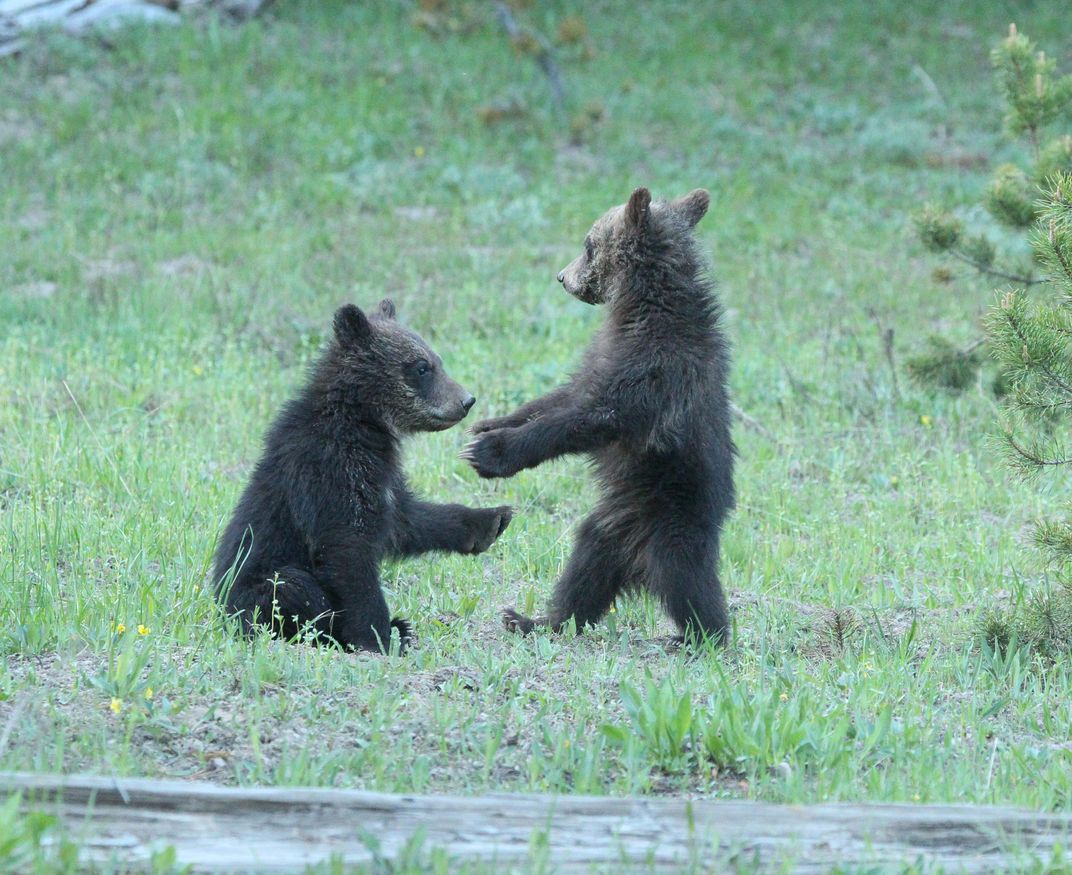Protections for Grizzlies in the Greater Yellowstone Area Upheld in Court
For over a decade, the protected status of grizzly bears under the Endangered Species Act has been under fire
/https://tf-cmsv2-smithsonianmag-media.s3.amazonaws.com/filer/b3/06/b306e151-a094-483c-a4c9-292a507e1e2c/gettyimages-153663648.jpg)
Earlier this month, a federal appeals court in San Francisco ruled that grizzly bears living around Yellowstone National Park will remain protected by the Endangered Species Act, Marie Fazio reports for the New York Times.
Grizzly bears are a top predator, but meat makes up only about one tenth of their diet—the rest is berries, seeds and other foraged foods. They were labeled as “threatened” under the Endangered Species Act in 1975, and since 2005 as their population recovered, efforts to remove them from the list continued. The United States Fish and Wildlife Service removed the Yellowstone population of bears from the list in 2017. By 2018, the surrounding states began to organize trophy hunts for the bears.
Just hours before the first hunt began in August 2018, a federal judge halted the plan and restored the grizzlies’ protections. The judge’s ruling was appealed, and the new decision upholds the protections.
The latest decision made on July 8 found that the when the grizzly bears were delisted in 2017, it was “the result of political pressure by the states rather than having been based on the best scientific and commercial data,” and therefore violated the Endangered Species Act, per the Times.
In the mid-1800s, about 50,000 grizzly bears lived south of Canada. But by 1975, less than 1,000 bears roamed the continental United States. About 130 of those individuals, lived in the area around Yellowstone National Park, called the Greater Yellowstone Ecosystem. But because of the protections from the Endangered Species Act and conservation efforts, the population around Yellowstone grew to at least 728 grizzlies in 2019. The bears even began to inhabit areas that had been without bears for over 100 years, Todd Wilkinson reports for the Guardian.
“None of us wants the grizzly bear to be on the list, because that means they’re imperiled,” Sarah McMillan, conservation director of WildEarth Guardians, a conservation group involved with the lawsuit, tells the Times. “I want them to be recovered and off — and they won’t need the protection of the Endangered Species Act.”

Bonnie Rice, a senior representative of the Sierra Club in the Greater Yellowstone and Northern Rockies Region, told National Geographic’s Christine Peterson in 2018 that Yellowstone grizzlies still face a host of threats. Climate change is affecting the availability of staple foods like whitebark pine nuts, and the population around the park is still isolated from other groups of grizzly bears.
“This population is always going to be vulnerable,” Rice tells National Geographic. “It’s the second-slowest reproducing mammal in North America....It’s a species that can’t take that kind of driving down of the population.”
Ideally, conservation efforts would be maintained until the Yellowstone population could interact with another group of grizzlies living in Montana’s Northern Continental Divide Ecosystem, allowing for more genetic diversity.
When the bears’ threatened status was lifted in 2017, Wyoming and Idaho began to organize state-licensed trophy hunts. Wyoming prepared to allow the hunting of at most 22 grizzly bears in the area near, but not within Yellowstone. Idaho allowed for one bear to be hunted, per National Geographic.
Montana did not organize any hunting, and the state is still grappling with how to manage grizzly bear populations should their protected status be lifted again, Nick Mott reports for Montana Public Radio.
“The grizzly population has more than recovered,” Tex Janecek, the outgoing president of the Montana’s chapter of Safari Club International, tells the Guardian. “We should be having a hunting season and the states should be regulating it. Bears are ranging far beyond the greater Yellowstone region and they are getting in trouble with livestock and putting people at risk. Hunting can be an effective tool.”
Speaking to the New York Times, McMillan estimates that the grizzly bear population will be stable once it reaches between 5,000 and 10,000 animals. For now, there are fewer than 2,000 grizzly bears living in the U.S.